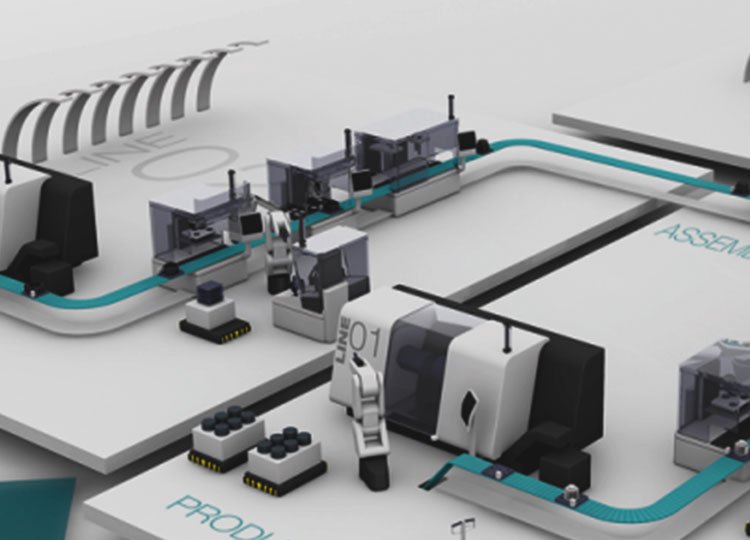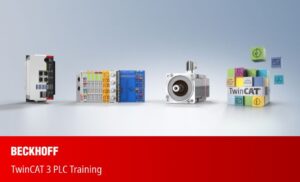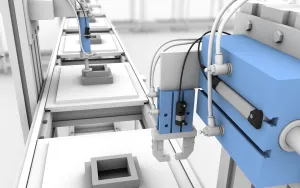What is keeping us from boosting productivity in our plants to the next level? During a recent presentation on Industry 4.0 and IIoT, I was asked this question.
The single biggest thing, in my opinion, that is keeping us from boosting productivity to the next level is a lack of DATA. Specifically, data about the systems and the processes.

Since the beginning of time, we have been hungry for efficiency. While early man invented more efficient methods to hunt and survive, today we are looking for ways to produce more efficiently in our plants with minimum or zero waste. After exhausting all the avenues for lean operations on plant procedures and our day-to-day activities, we are now looking at how we can recover from unanticipated downtime quickly. I am sure in future we will be seeking information on how can we prevent the downtime altogether.
There are plentiful of reasons for downtime. Just a few examples:
- Unavailability of labor – something we might be experiencing these days, when the COVID-19 pandemic has reduced some labor forces
- Unavailability of raw materials
- Unavailability of replacement components
- Unavailability of assets
- Failures in machines/components
In this list, the first two reasons, are beyond the scope of this blog’s intentions and frankly somewhat out of controls from the production standpoint.
The next two reasons, however, are process related and the last one is purely based on the choices we made. These three reasons, to a certain extent, can be reduced or eliminated.
If the downtime is process related, we can learn from them and improve our processes with so called continuous improvement initiatives. We can only do these continuous improvements based on observable factors (a.k.a. data) and we cannot improve our processes based on speculations. Well, I shouldn’t say “cannot”, but it will be more like a fluke or luck. It is apt to say “ what can’t be measured, can’t be improved!”
A good example for elaborating my point is change-over in the plant to produce a different product. Unless there is a good process in place for ensuring all the change-over points are properly addressed and all the change parts are correctly installed and replaced, the changeover time could and will likely lead to tremendous amounts of lost productivity. Secondly, if these processes are done manually and not automated, that is also a loss of productivity or, as I like to say, an area for continuous improvement to boost productivity based on observable facts. Sometimes, we take these manual change-overs as a fact of life and incorporate that time required as a part of “planned” downtime. Of course, if you do change-overs once a year – it may be cost effective to keep the process manual even in today’s situation. But, if your plant has multiple short batch productions per day or per week, then automating the changeovers could significant boost productivity. The cost benefit analysis should help prove if it is continuous improvement or not.
Assets are an important part of the equation for smooth operations. An example would be molds in the stamping plant or cutting-deburring tools in metal working plants. If plants have no visibility or traceability of these important assets for location, shape or form, it could lead to considerable downtime. The calibration data of these tools or number of parts produced with the tool are also important pieces of data that needs to be maintained for efficient operations. Again, this is data about the system and the integration of these traceability initiatives in the existing infrastructure.
Failures in machines or components could cause severe downtime and are often considered as unavoidable. We tackle these failures in a two-step approach. First, we hunt for the problem when it is not obvious, and two, we find the replacement part in the store room to change it out quickly. And, as process improvement, we schedule preventative maintenance to inspect, lubricate and replace parts in our regular planned downtime.
The preventative maintenance is typically scheduled based on theoretical rate of failure. This is a good measure, especially for mechanical components, but, predictive or condition-based maintenance usually yields higher returns on productivity and helps keep plants running smooth. Again, predictive maintenance relies on data about the condition of the system or components. So, where is this data and how do we get to it?
Standardization of interfaces is another important component for boosting productivity. In my next blog, I will share how IO-Link as a technology can help address all of these challenges and boost productivity to the next level.
Source: Automation Insights







